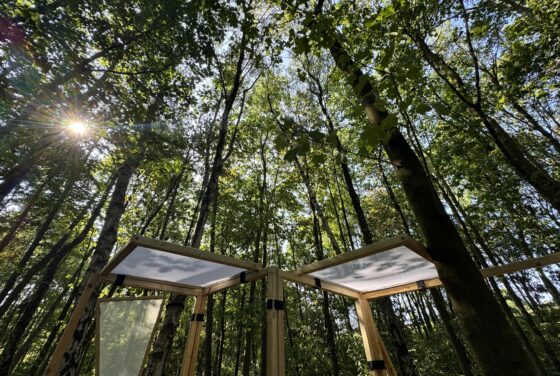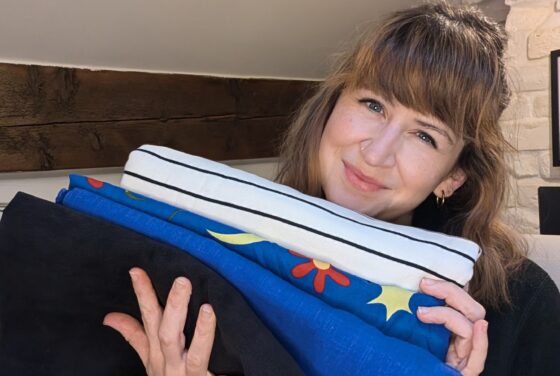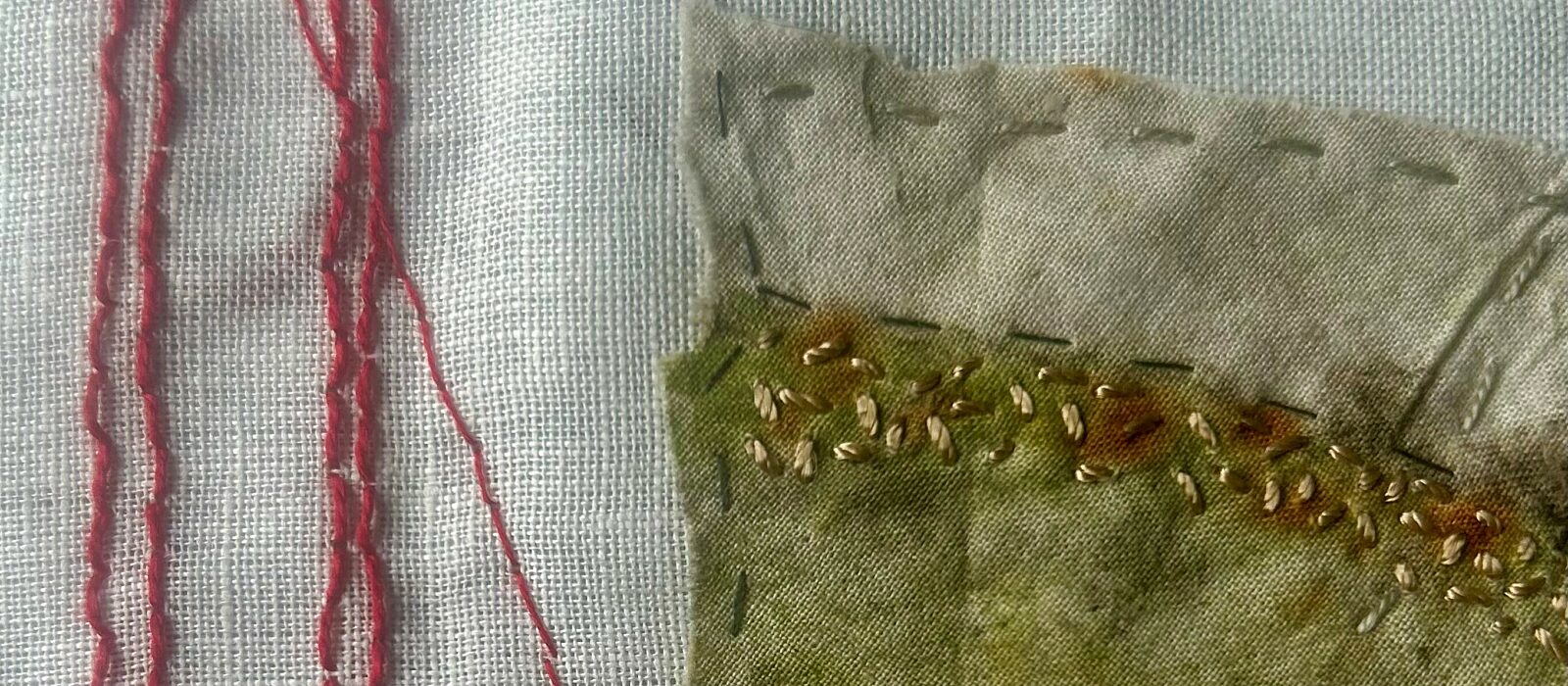
Slow Stitching by Christine Thomas
DATE
TAGS
Dare to Dream artist, Christine shares her love of hand stitching
As an artist and researcher, I am always reflecting and developing my art practice which has recently been through an evolution. Through delivering workshops for Derbyshire Makes I have rediscovered my love for hand stitching, slowing down and appreciating the conversations that come through hand stitching and using sustainably sourced materials. I also have a much treasured book, Slow Stitch by Claire Wellesey-Smith, which I keep returning to.
Wellesey-Smith presents inspirational projects to dip into, and as I also include walking in my practice, her chapter on Stitching, Walking, Mapping, the process of walking and mapping becomes a contemplative exercise in placemaking, using foraged plants to dye materials and stitches to sketch with, resonates strongly with my own practice. I dye fabrics using found rusty objects, abstracting shapes and colours from the landscapes. My most recent abstract pieces are made using cotton that has been slowly dyeing in my garden for the past two years, wrapped around a rusty object it now has a strange green hue that I have no idea how it was created and looks nothing like the other rust dyed fabrics in my collection.

These pieces are all inspired by locations determined by trauma in Derbyshire; they are a way of using stitch as a reparative process for my own contemplation and reflection on the trauma that occurred but can no longer be seen. Each location looks innocuous, with the only record being online sources or newspapers as the event dims from local memory. Each piece is meditatively and slowly stitched.
In Praise of Slow by Carl Honore, which has become my latest ‘must read’, embraces slowness as a way of life, the slowing down across all aspects of life, from eating to finances to whole cities. Slowing down is not a luddite approach to our developing world, but an embrace of being mindful, of taking time to enjoy the moment and find a pace of life that allows us to stop clock watching and find our flow state. Elaine Lipson encouraged us all to embrace this in her Slow Cloth Manifesto, where she applies Honore’s slow movement to textiles, calling for the textiles industry as a whole to become more sustainable. Her manifesto is a call to action that all textile artists can embrace, from hobbyist to professional, where process and materials take the soul and culture as core elements of making. Patrick Grant, of The Great British Sewing Bee fame, has also echoed Lipson’s call to action in his latest book, Less, (unironically sold with a ‘buy one get one half price’ sticker on the front cover), where he talks of quality and the impact of fast fashion on the environment and sustainable practices.
My own art practice and community practice has adopted a similar approach, using hand sewing to consider each stitch in relation to reparation, using fabrics that are sustainable and recyclable – I am a convert to linen which can be dyed, recycled, stitched to produce a beautiful piece of work while still being a great source of ecofriendly practices. Some of the threads I use are vintage or donated from other’s stashes. If I buy anything new it is either locally sourced or bought from independent retailers who specialise in textiles. But the most beneficial change has been to my approach to time, where I am busy working, studying, freelancing and keeping my own art practice. Time can become irrelevant in a deadline driven world when a piece of linen is held in my hands, when sitting with a community of sewers, chatting, drinking tea and gently working on a piece of fabric gives feelings of wellbeing beyond that few hours of connection.
Christine Thomas, Artist & Researcher
Christine is a fine artist who is studying for a practice-led research PhD at the University of Derby. Her work addresses gender-based violence and trauma informed rural landscapes using stitch as reparation as a methodology. She has exhibited her work internationally and also works as a workshop facilitator. She is a Neurodivergent, Welsh artist living in Belper with her artist partner.
Instagram: @ctthomas29
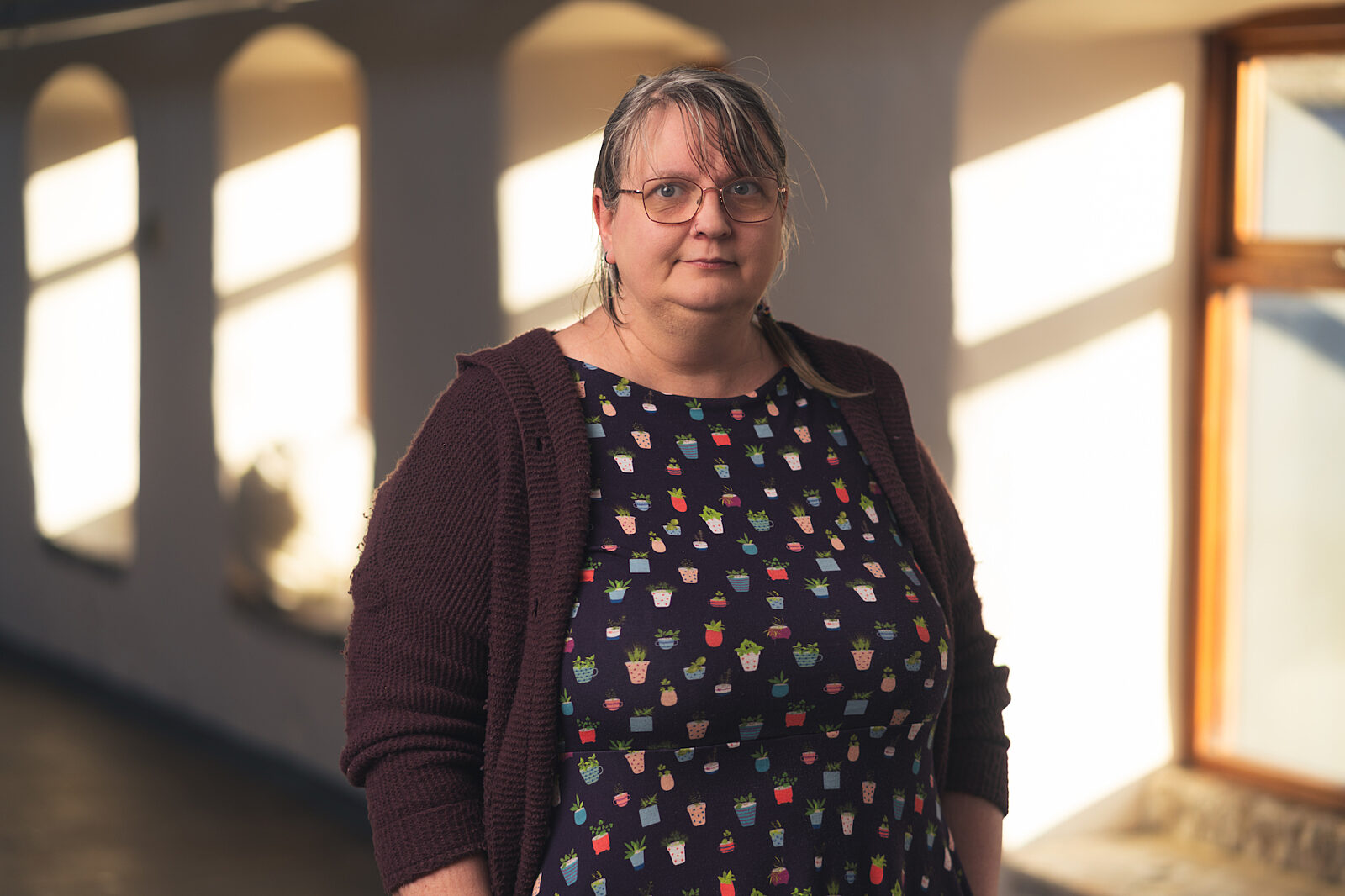
Further reading
Slow Stitch by Claire Wellesey-Smith (2015) Batsford Books.
In Praise of Slow by Carl Honore (2004) Orion Books
Less by Patrick Grant (2024) Harper Collins
The Slow Cloth Manifesto: An Alternative to the Politics of Production by Elaine Lipson (2012) accessed online:-
The Slow Cloth Manifesto: An Alternative to the Politics of Production
MORE NEWS
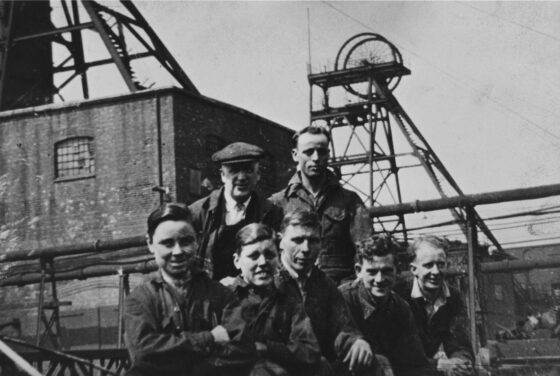
Derbyshire Makes History Film Commission
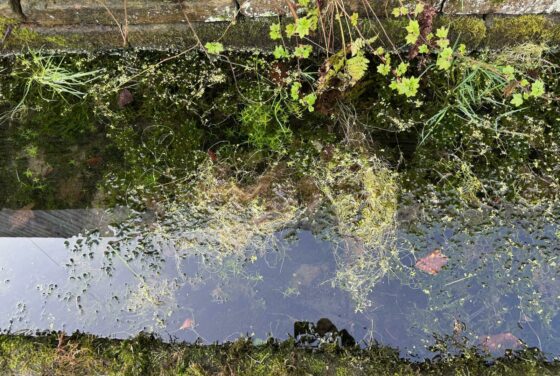
Wisdom of Water: Making Space at Whitfield Well
